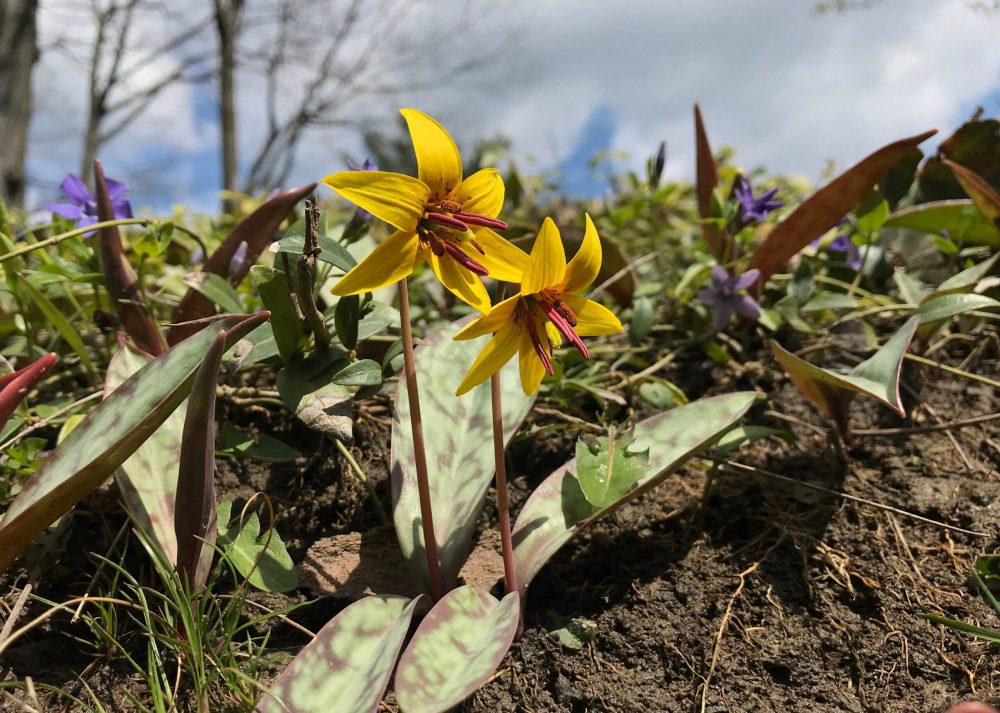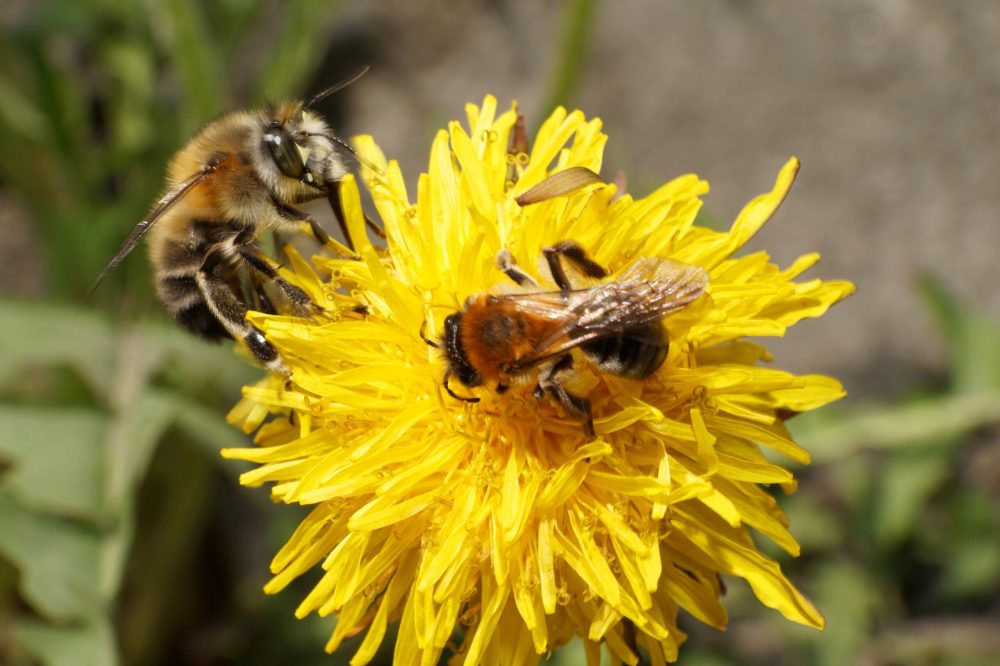5 Spring Ephemeral Wildflowers in the Appalachians

Trout lily is one of the common spring ephemeral flowers found around Asheville in the Appalachians.
by MK Brown, Ecotour Guide and Naturalist
As the sun starts to warm the still trees on south facing slopes and black bears rouse from their slumber and the spring peepers commence their evening chorus, the forest begins to come alive once more. The heavy cloak of winter’s chill is finally lifting off. This miraculous intervention is one we have all been eagerly awaiting here in Southern Appalachia, springtime! There is a flurry of activity in the forest between the warming of the frozen ground and the leaf out of trees. One of the earliest harbingers of spring is the early blooming plants known as ephemeral wildflowers.
These delightful woodland herbs of deciduous forests have a very short window of time to emerge, photosynthesize and reproduce before the canopy closes with tree leaf-out, reducing the amount of available light to the forest floor where they dwell. The spring ephemerals are known as such due to their short but curious life cycle. After flowering, they lose all of their above ground vegetation, retreating back underground where they store all of their energy in thick roots or bulbs. Don’t let their disappearing act fool you however, these plants are long lived, blooming year after year. Many other native wildflowers bloom in early spring but are not considered true ephemerals because their leaves persist either partially or year round and remain active for most of the growing season. Violets, trilliums and some lilies fall into this category.
What does Ephemeral mean?
According to Merriam-Webster, the term ephemeral is defined as lasting a very short time. The earliest uses of the word in English appeared in medicine, referring to short-term fevers. Eventually the term came to be associated with organisms that have very short life spans. A line by the famous poet Robert Frost encompasses such brevity of life in the forest, ‘Nature’s first green is gold, Her hardest hue to hold. Her early leaf’s a flower; but only so an hour.’ The native wildflowers of early spring have a big job to do in a very short time. They burst forth with striking variations of color, shape and size and wither with the same abruptness-their heyday ending when the canopy closes above them.
How do these plants bloom so early?
There is no actual date on a calendar that determines the right time for ephemerals to emerge from underground but nature’s biological clock never skips a beat. Leaf out varies from year to year and is more dependent on the cumulative thermal heat available after an obligatory cold period has abated, i.e., winter, and the length of day. It is a risky game with high stakes that the earliest plants of spring have to play. The plant must accelerate its metabolism and shoot up from below ground without knowing if the weather will be favorable enough for it to perform its necessary functions in order to survive. While the majority of other forest plants, like deciduous trees, are slow to come out of dormancy and start growing new vegetation, the ephemeral wildflowers take advantage of increased sunlight and have a high rate of photosynthesis as well as specialized sex organs that reflect visible light and radiate sunlight onto them, thus speeding up their development. They also utilize the high levels of moisture and nutrients in the soil at this time of year. Moist soil helps moderate the extreme difference between day and night temperatures with some even closing up their flowers at night to safeguard against freezing temps. And by growing low to the ground, they are protected from the cold, drying winds that permeate through the leafless forest in early spring. These wildflowers also rely on the duff layer of the forest floor to shelter their tubers, rhizomes or corms throughout the year. During the fall and winter these underground organs send up shoots into the leaf litter to take in nutrients and water which in turn gives them a head start to begin growing when conditions are favorable in the spring.

Many spring ephemerals are a critical source of nectar for bees that specialize on these flowers alone. Here, bees in the Andrena and Melecta genera pollinate a common dandelion.
Who Pollinates Ephemeral Flowers?
After a long period of dormancy in the forest for both plants and animals, ephemeral flowers are often the first to bloom and produce nectar for hungry pollinators in early spring. They are a critical source of nectar and pollen for bumblebees, miner bees, some early season skippers, gnats, and flies among other things. Most of the spring ephemeral plants are relatively small and therefore must spend a considerable amount of energy into making showy blooms. Some species of ephemerals do not even bother producing nectar like the bloodroot, but the pollen is still a good source of protein and amino acids for bees with lots of mouths to feed. Other ephemeral flowers like the spring beauties and trout lilies, play a crucial role to miner bees, in the Andrena genus, that have evolved to only feed on their pollen as the bees cannot digest the pollen of other plants as easily. Many of our native bee species are specialists of this kind and rely on a small group of plants to survive.
Ants also play a critical role in the perpetuation of these wildflowers. A fascinating mutually beneficial relationship among spring ephemerals and ants formed over millennia in a process called myrmecochory, whereas the ant receives a nutritious snack from the fleshy outer portion of the seed or elaiosome, and the plant receives greater dispersal of their seeds, albeit a short distance, perhaps only up to two meters from the parent plant. It is, however, far enough away that the parent plant does not have to compete with their ‘offspring’ for sunlight and other nutrients. Elaiosomes are shaped somewhat like the handle of a tea cup, making it easier for ants to transport the seed back to their nest. The rest of the inedible parts of the seed are discarded along with other organic matter in the ants nest and then germinates easily in the fertile soil of the ants compost pile. Many ephemeral wildflowers rely on these native ant species to disperse their seeds including the bloodroot and trout lily.
